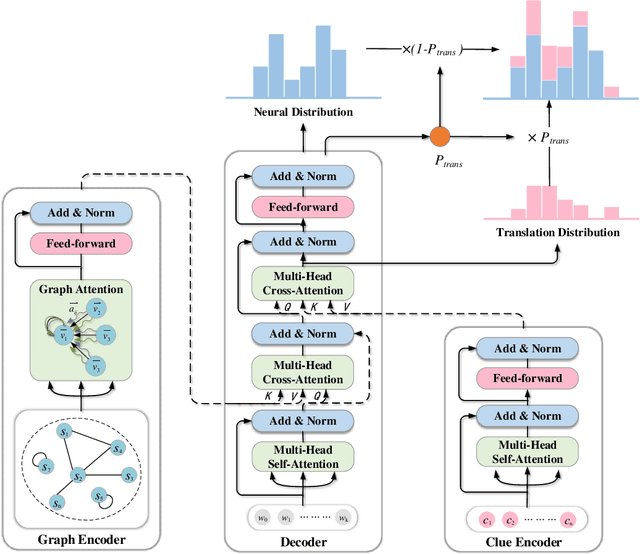ClueGraphSum: Let Key Clues Guide the Cross-Lingual Abstractive Summarization
Paper and Code
Mar 09, 2022



Cross-Lingual Summarization (CLS) is the task to generate a summary in one language for an article in a different language. Previous studies on CLS mainly take pipeline methods or train the end-to-end model using the translated parallel data. However, the quality of generated cross-lingual summaries needs more further efforts to improve, and the model performance has never been evaluated on the hand-written CLS dataset. Therefore, we first propose a clue-guided cross-lingual abstractive summarization method to improve the quality of cross-lingual summaries, and then construct a novel hand-written CLS dataset for evaluation. Specifically, we extract keywords, named entities, etc. of the input article as key clues for summarization and then design a clue-guided algorithm to transform an article into a graph with less noisy sentences. One Graph encoder is built to learn sentence semantics and article structures and one Clue encoder is built to encode and translate key clues, ensuring the information of important parts are reserved in the generated summary. These two encoders are connected by one decoder to directly learn cross-lingual semantics. Experimental results show that our method has stronger robustness for longer inputs and substantially improves the performance over the strong baseline, achieving an improvement of 8.55 ROUGE-1 (English-to-Chinese summarization) and 2.13 MoverScore (Chinese-to-English summarization) scores over the existing SOTA.
 Add to Chrome
Add to Chrome Add to Firefox
Add to Firefox Add to Edge
Add to Edge